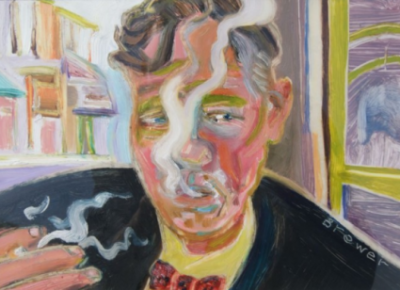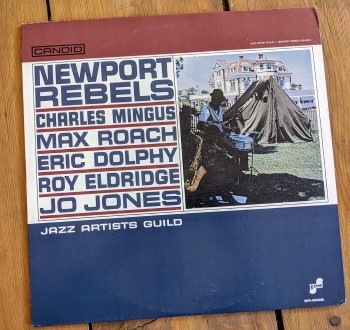.
.

“Downtown Man” by James Brewer
.
___
.
…..In recent days, I have posed this question via email to a handful of creative artists and citizens of note:
.
…..“During this time of social distancing and isolation at home, what are examples of the music you are listening to, the books you are reading, and/or the television or films you are viewing?” (If you wish, please feel free to also share your thoughts on the effects this isolation is having on your creativity or on your world).
.
…..Responses to this question will be published periodically as this era progresses.
.
This edition features the email responses of journalist Joe Hagan and photographer Tim Davis
(published with only minor stylistic editing)
.
.
___
.
.
photo Tim Davis

Joe Hagan
Investigative journalist; special correspondent for .Vanity Fair; .author of Sticky Fingers: The Life and Times of Jann Wenner and Rolling Stone Magazine
.
___
.
This response was submitted on April 1
…..For me, music is a daily elixir and especially right now. I’ve been playing records at night on Facebook Live, a little living room jam for friends, and getting a lot of mileage from the Basie “jam” albums on Pablo Records and Yusef Lateef’s 1960s albums for Atlantic. But the album I keep coming back to is this odd but absolutely fantastic album, “Newport Rebels.”
…..In 1960, Charles Mingus and Max Roach decided they’d had it with the “annual Ben-Hur-with-a-horn production at Freebody Park,” as the liner notes put it. The Newport Jazz Festival, they felt, had become too commercial and formulaic. Ever the provocateur, Mingus put on his own outlier program in nearby Cliff Manor. Later that fall, he and Roach — with Roy Eldridge, Eric Dolphy, Jo Jones and the great Tommy Flanagan — cut this album, an homage to their achievement. It’s a warm and deeply brotherly jam, with Mingus and Jones — and, alternately, Mingus and Roach — giving the elder Eldridge room to stretch out on some swinging, bluesy solos that surprise and delight at every turn. The feeling of intimate connection inside these jams is palpable. You can tell Mingus has so much heart for Eldridge and Jones, who are bonded in the blues. Flanagan’s touch on piano, of course, is the essence of soul. If you were quarantined with only one band, you could hardly do better than this.
.

.
.
…..If you only sample one track, try “Me and You,” the closer. It’s magic. (Originally released on the Candid label, this is a reissue from Barnaby Records, pressed in 1978)
.
.
.
_____
.
.

Tim Davis
Tim Davis (born Malawi, 1969) is an artist, writer, and musician who lives in Tivoli, NY and teaches photography at Bard College. His latest project, I’m Looking Through You, will be published by Aperture in 2021. The Tang Museum at Skidmore College showed alarge survey of recent work in photography, video, sound, sculpture and performance entitled “When We Are Dancing, I Get Ideas” in 2019. The catalog will be published in 2020.
.
___
.
This response was submitted on April 9
Once Trump and Pence died of Covid-19, we all remember the jubilation many felt when Nancy Pelosi became president. And in her first week, like a lion in winter, she passed the CAT (Covid Arts Transfusion) Act, which provided a huge swell of funds for artists who can “ameliorate, absorb, swaddle, and embrace the pain humanity is suffering.” My project, Healing Blimps, immediately swelled into fruition. I received a grant to float a dozen dirigibles over the country’s settlements, broadcasting a playlist of music that, just by being in its presence, heals the soul. Each was outfitted with a speaker system that wouldn’t be out of place at a Led Zeppelin concert or Papal Encyclical, to bring our message of hope and delirium to the world. The playlist for the blimps quickly evolved, over a marijuana-fueled Zoom meeting between me and my global musical shaman-consultants. Of course, there were accidents. The spring weather in Oklahoma is problematic for blimps. But mostly, the country reported that when the Healing Blimps arrived, communities came together, (six feet apart) and wept (in their masks). Hearts were opened and genuineness flowed through the lymph systems of our sisters and brothers in quarantine. Here is the first Healing Blimps playlist:
-
-
-
-
- Alice Coltrane, Turaya & Ramakrishna
- Hilliard Ensemble, Guillaume Dufay, O Sancte Sebastiane
- Come Live with Me, Dorothy Ashby
- The Inflated Tear, Rahsaan Roland Kirk
- Paris, Texas, Ry Cooder
- Aguirre I Lacrimae de Rei, Popol Vuh
- Bismillahi ‘Rrahmani ‘Rrahim, Harold Budd
- It Never Entered My Mind, Miles Davis Quintet
- Flying, The Beatles
- Alabama (Live at Birdland), John Coltrane
- Lift Him Up, That’s All, Washington Phillips
- Chants d’Auvergne, Vol. 1: No.2. Bailero, Joseph Cantaloube
- Magnolia, Jorge Ben
- I Want to Pay You Back, The Chi Lites
- B-A-B-Y, Carla Thomas
- Coldest Night of the Year, Vashti Bunyan
- Memphis in June, Nina Simone
- Swamp Fire, Duke Ellington
- That Summer Feeling, Jonathan Richman
- I Got Your Ice Cold Nugrape, Nugrape Twins
- I Must Be in a Good Place Now, Bobby Charles
- A Love Supreme, John Coltrane
- We Shall Overcome, Charlie Haden
- Rivers of Babylon, The Melodians
- Arvo Part, Spiegel im Spiegel
- Fleurette Africaine, Duke Ellington
- Astral Traveling, Pharaoh Sander
- Bwaata, Joe Henderson
- His Blessings, McCoy Tyner
- Like it Is, Yusef Late
- Let Her Dance, Bobby Fuller Four
.
.
___
.
.
Click here to read Volume 1 of this series, featuring recording artist Bruce Cockburn.
Click here to read Volume 2 of this series, featuring music writers/critics Howard Mandel and Joel Selvin
Click here to read Volume 4 of this series, featuring Spelman College president Mary Schmidt Campbell
Click here to read Volume 5 of this series, featuring Arizona State University historian Tracy Fessenden
.
.
.
-
-
-







































